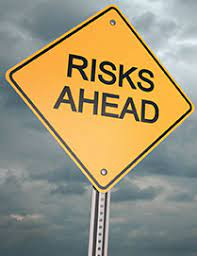For my clients who are approaching retirement, the conversation around de-risking their investment portfolio is a certainty. “When do we stop investing?” “Should we be out of the markets?” These kinds of questions are completely natural.
Having lived through the drastic market crashes of 2001, 2008, and 2020, most Canadians vividly recall horror stories of retirees forced into rejoining the workforce as their nest eggs were decimated overnight. Nobody wants that to happen to them, but is the answer really to avoid equities all together?
The Impact of Early Losses
When conducting financial modeling, the early years of retirement are key. Losing a significant portion of your principal off the bat makes it more challenging to recover. Using an oversimplified example:
10% Loss in Year 1
| Year | Year 1 | Year 2 | Year 3 | Year 4 |
| Start of Year
Value |
$100,000 | $80,000 | $74,000 | $67,700 |
| Gain (Loss) % | (10%) | 5% | 5% | 5% |
| Gain (Loss) $ | $10,000 | $4,000 | $3,700 | $3,385 |
| Income Withdrawal | ($10,000) | ($10,000) | ($10,000) | ($10,000 |
| End of Year Value | $80,000 | $74,000 | $67,700 | $61,085 |
10% Loss in Year 4
| Year | Year 1 | Year 2 | Year 3 | Year 4 |
| Start of Year
Value |
$100,000 | $95,000 | $89,750 | $84,237 |
| Gain (Loss) % | 5% | 5% | 5% | (10%) |
| Gain (Loss) $ | $5,000 | $4,750 | $4,487 | ($8,424) |
| Income Withdrawal | ($10,000) | ($10,000) | ($10,000) | ($10,000 |
| End of Year Value | $95,000 | $89,750 | $84,237 | $65,813 |
Even though both scenarios had the same return percentages, the retiree whose loss came in year four fared nearly 8% better in the same time frame! There is inherit value to playing it safe in the early years of your retirement and mitigating initial losses.
The Case for De-Risking
If you are expecting to draw down on your retirement accounts within the next 5-7 years, you should definitely re-evaluate your risk tolerance. As illustrated above, taking a significant loss as you switch from accumulation mode to decumulation mode can be harmful to your plans. If your retirement can be funded with lower risk, and potentially lower returning holdings, why not play it safe? When you can afford to take less risk, doing so increases your likelihood of a successful retirement!
Why You (Probably) Still Need Equity Exposure
As with all things finance, your decisions come with tradeoffs. Taking less market volatility risk with your portfolio introduces new risks; chief among them, inflation and longevity risk.
The risk of inflation hasn’t been this evident in several decades. As the cost of living goes up, your retirement income will need to rise accordingly to avoid a drop in lifestyle. If your retirement portfolio is too conservative, earning less than inflation, you could find yourself eroding too much principal to be sustainable.
Longevity risk is the risk of outliving your money. If your portfolio doesn’t earn a high enough return to sustain itself over 30, 40, or even 50+ years, you could wind up with no assets left.
How To Invest More Wisely
There are countless strategies you can implement to reduce market risk as you begin retirement, without falling victim to inflation and longevity risk. You could consider an income strategy using a “safety bucket”, guaranteeing part of your fixed income with a life annuity, you can diversify your holdings, take a glidepath approach, and many more.
The single best way to reduce risk is to have a conversation with your Financial Advisor. Before you can determine HOW to de-risk, you need to understand HOW MUCH risk you need to meet your goals. Retirement becomes much simpler when your portfolio matches your objectives.

Recent Comments